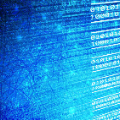Deep reinforcement learning (DRL) algorithms can suffer from modeling errors between the simulation and the real world. Many studies use adversarial learning to generate perturbation during training process to model the discrepancy and improve the robustness of DRL. However, most of these approaches use a fixed parameter to control the intensity of the adversarial perturbation, which can lead to a trade-off between average performance and robustness. In fact, finding the optimal parameter of the perturbation is challenging, as excessive perturbations may destabilize training and compromise agent performance, while insufficient perturbations may not impart enough information to enhance robustness. To keep the training stable while improving robustness, we propose a simple but effective method, namely, Adaptive Adversarial Perturbation (A2P), which can dynamically select appropriate adversarial perturbations for each sample. Specifically, we propose an adaptive adversarial coefficient framework to adjust the effect of the adversarial perturbation during training. By designing a metric for the current intensity of the perturbation, our method can calculate the suitable perturbation levels based on the current relative performance. The appealing feature of our method is that it is simple to deploy in real-world applications and does not require accessing the simulator in advance. The experiments in MuJoCo show that our method can improve the training stability and learn a robust policy when migrated to different test environments. The code is available at https://github.com/Lqm00/A2P-SAC.
翻译:暂无翻译



